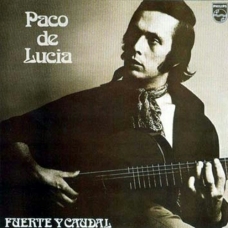 Pavarotti & Friends was a series of benefit concerts hosted by Italian operatic tenor Luciano Pavarotti between 1992 and 2003 in his home town of Modena, Italy. Proceeds from the events were donated to humanitarian causes including the international aid agency War Child and the United Nations High Commissioner for Refugees. The concerts featured Pavarotti performing with special musical guests and each concert was released as a compilation album and DVD under London Records/Decca Records.
Pavarotti & Friends was a series of benefit concerts hosted by Italian operatic tenor Luciano Pavarotti between 1992 and 2003 in his home town of Modena, Italy. Proceeds from the events were donated to humanitarian causes including the international aid agency War Child and the United Nations High Commissioner for Refugees. The concerts featured Pavarotti performing with special musical guests and each concert was released as a compilation album and DVD under London Records/Decca Records.
The Pavarotti & Friends for War Child concert was held on 20 June 1996. Proceeds from the concert were donated to the international aid agency, War Child, specifically in aid of children in Bosnia. The concert featured guest performances by Elton John, Sheryl Crow, Eric Clapton, Liza Minnelli and Joan Osborne. The compilation arrived at position 19 in Danish Chart. (wikipedia)

Eclecticism, rendered with more good nature than real accomplishment, is the key characteristic of this mixed bag of performers gathering together in Modena, Italy, Luciano Pavarotti’s hometown, for a benefit concert for Bosnian children. Actually, the pop stars, notably Eric Clapton and Elton John, come off better than the host. Sheryl Crow doesn’t embarrass herself duetting on Mozart with Pavarotti nearly as much as Pavarotti does duetting with Liza Minnelli on “New York, New York.” With plenty of Italian pop and competent but unexceptional Anglo-American hits to accompany the classical musings, there’s something here to bore nearly everyone, though the idea, of course, is to have something to intrigue everyone enough to buy a copy and help the charity. (by William Ruhlmann)

Personnel:
Eric Clapton – Luciano Pavarotti – Joan Osborne – Elton John – Liza Minnelli – Zucchero – Sheryl Crow – Ligabue – Jon Secada – The Kelly Family – Litfiba – Solis String Quartet – Paco De Lucia, Al Di Meola & John McLaughlin
+
Orchestra conducted by Rob Mathes (on 01. + 16.)
Orchestra conducted by José Molina (on 02,, 05.)
Orchestra conducted by Anne Dudley (on 17.)
+
East London Gospel Choir (on 01. + 16.)

Tracklist:
01. Eric Clapton & Luciano Pavarotti: Holy Mother (Clapton/Bishop) 5.38
02. Joan Osborne: Saint Teresa (Bazilian/Osborne/Chertoff/Hyman) 5.41
03. Elton John: I Guess That’s Why They Call It The Blues (Johnstone/John/Taupin) 4.39
04. Liza Minnelli & Luciano Pavarotti: New York, New York (Kander/Ebb) 3.53
05. Zucchero: My Love (Il Volo) (Fornaciari/Palladino/MacDonald) 5.37
06. Sheryl Crow & Eric Clapton: Run, Baby, Run (Bottrell/Baerwald/Crow) 6.09
07. Ligabue & Luciano Pavarotti: Certe Notti (Ligabue) 4.18
08. Jon Secada: Angel (Secada/Morejon) 4.53
09. The Kelly Family & Luciano Pavarotti: Ave Maria (Gounod/Bach) 2.24
10. Litfiba: Spirito (Renzulli/Pelù) 4.48
11. Eric Clapton: Third Degree (Boyd/Dixon) 4.49
12. Sheryl Crow & Luciano Pavarotti: Là Ci Darem La Mano (Don Giovanni) (Da Ponte/ Mozart) 3.13
13. Edoardo Bennato & Solis String Quartet: Le Regazze Fanno Grandi Sogni (Bennato) 3.17
14. Jon Secada & Luciano Pavarotti: Grenada (Lara) 3.18
15. Paco De Lucia, Al Di Meola & John McLaughlin: Mediterranean Sundance (Di Meola) .4.14
16. Joan Osborne & Luciano Pavarotti: Gesù Bambino (Martens/Yon) 3.51
17. Elton John, Luciano Pavarotti & Ensemble: Live Like Horses (John/Taupin) 4.59





 Fuente y caudal (Source and Flow) is the ninth studio album by the Spanish composer and guitarist Paco de Lucía. All pieces are credited Paco de Lucía and José Torregrosa.
Fuente y caudal (Source and Flow) is the ninth studio album by the Spanish composer and guitarist Paco de Lucía. All pieces are credited Paco de Lucía and José Torregrosa. This is a historic recording by the greatest flamenco guitarist. His technique is different from the classical guitar. He holds his instrument over his right knee instead of using a foot stool. He uses techniques like tremolo (fast repetition of one note), rasguado (stroking with several fingers), arpeggio (broken chord) and golpe (tap). You can hear the Moorish influence and the Phrygian mode. Each track has the rhythm of a traditional Spanish dance. Highlights: Entre dos aguas, Bulerías por soleá, Fuente y caudal. (bonnielaurel)
This is a historic recording by the greatest flamenco guitarist. His technique is different from the classical guitar. He holds his instrument over his right knee instead of using a foot stool. He uses techniques like tremolo (fast repetition of one note), rasguado (stroking with several fingers), arpeggio (broken chord) and golpe (tap). You can hear the Moorish influence and the Phrygian mode. Each track has the rhythm of a traditional Spanish dance. Highlights: Entre dos aguas, Bulerías por soleá, Fuente y caudal. (bonnielaurel)



 Okay, I´m back from my trip to Andalusian … a real excellent destination (as Chris wrote) even we had many rainy days …
Okay, I´m back from my trip to Andalusian … a real excellent destination (as Chris wrote) even we had many rainy days …











